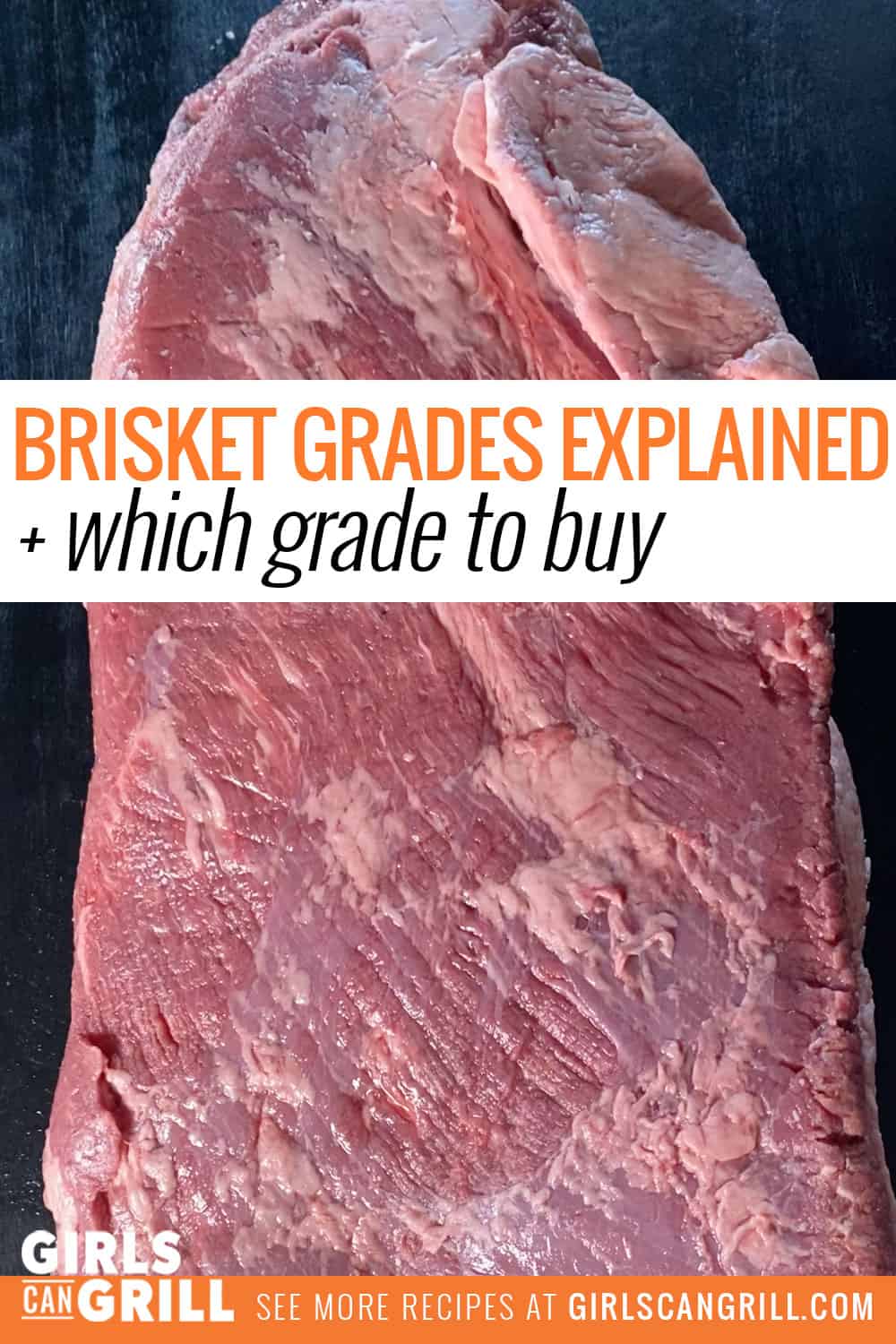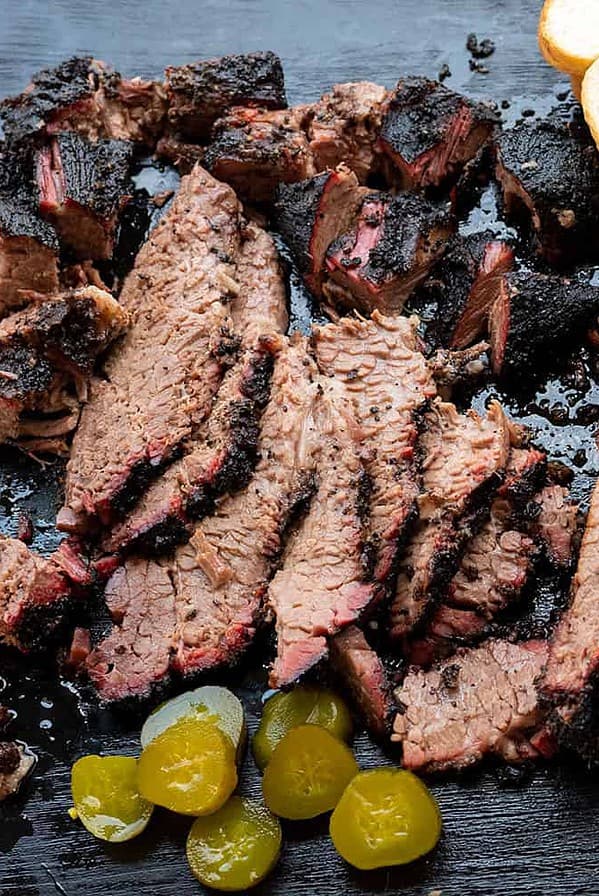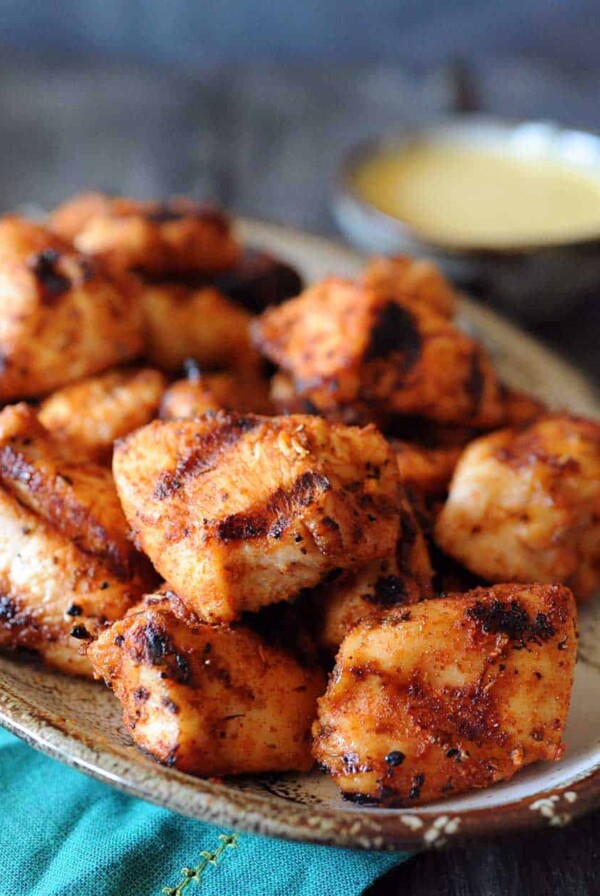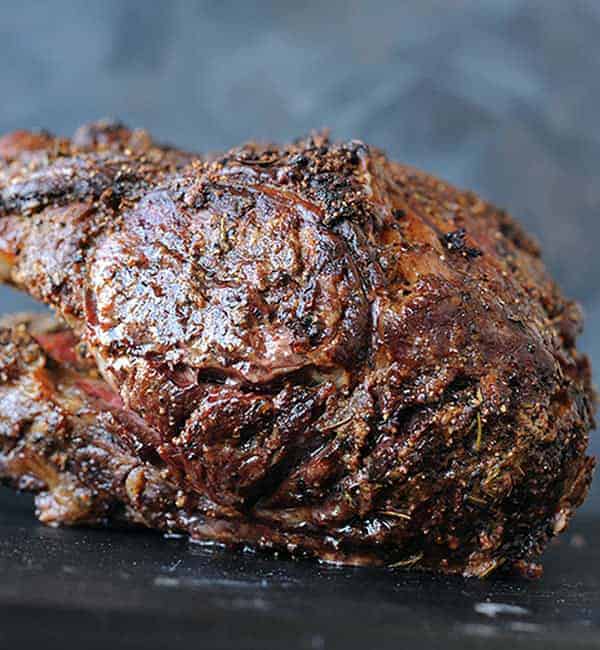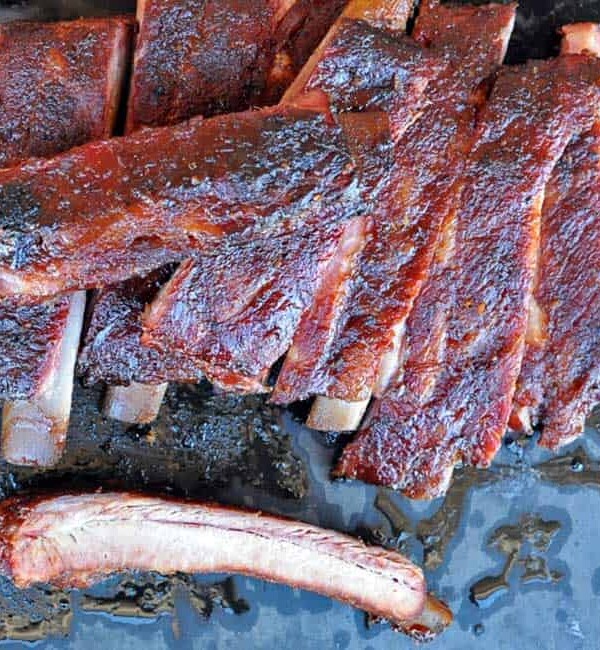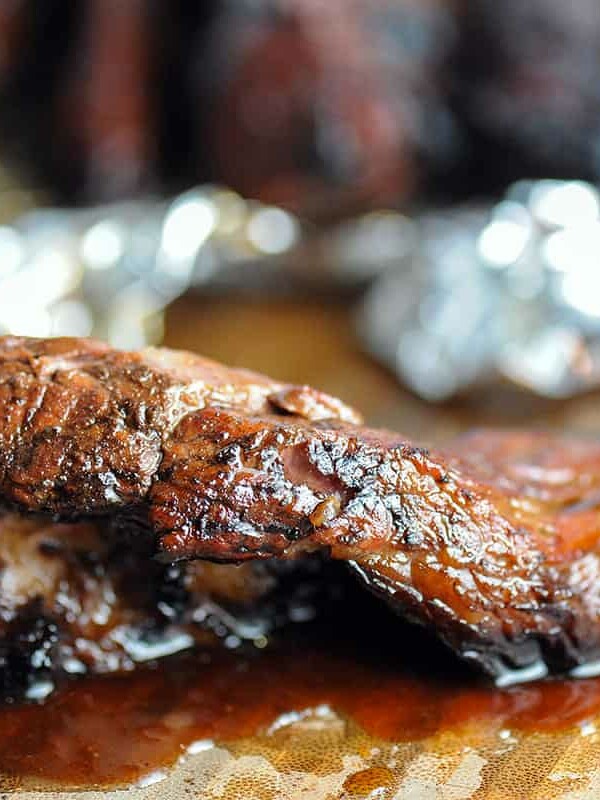Buying a brisket can be confusing because there are so many different brisket grades and descriptions. This guide will help you select the right one.
The more marbling a cut of beef has, the more flavorful and tender it will be.
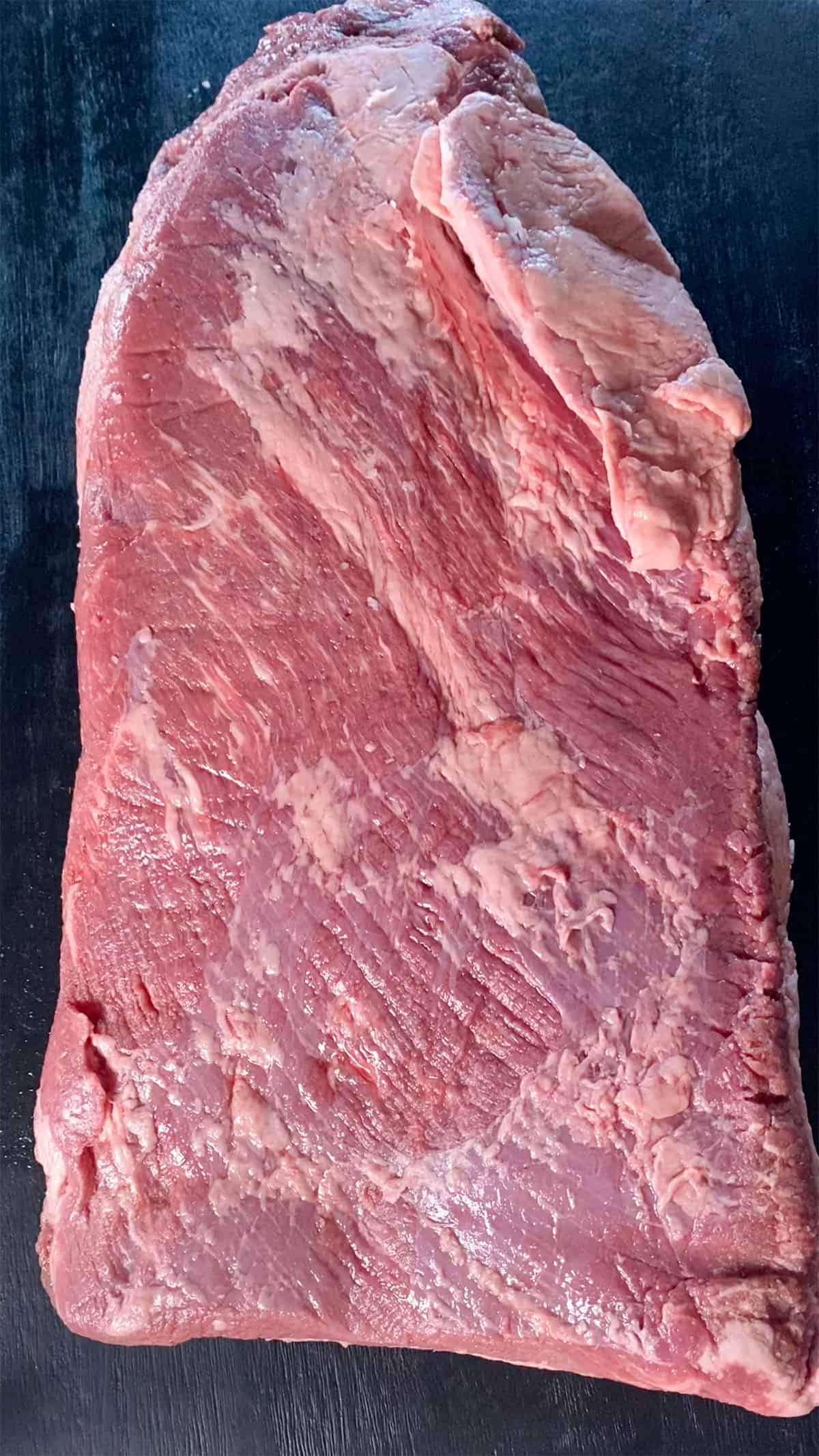
Save this BBQ Tip
Enter your email, and I’ll send this link directly to your inbox. Plus, you’ll get new BBQ recipes and tips weekly.
Table of Contents

Beef Grades Explained: U.S., Canada & Australia
United States Beef Grading System
The U.S. Department of Agriculture grades beef based on the cow’s maturity, quality of lean muscle and the presence of marbling. Marbling is the white streaks of fat that you can see among the red meat. It enhances juiciness and flavor.
The USDA recognizes eight different grades of beef. Routinely, you’ll only find three USDA grades in your local grocery store: select, choice and prime. The other five are more for canning and other commercial production.
“The goal for the use of these criteria is to provide purchasers with a system that measures and predicts quality by methods that maximize consistency and reliability.”
North American Meat Institute
Select-grade beef has the least amount of marbling. Prime grade has the most abundance of marbling.
I don’t recommend purchasing a select grade brisket. Because there is very little marbling in this grade, it will be challenging to keep that brisket moist.
If you purchase a choice grade brisket, it will have a moderate amount of marbling. And when you smoke the brisket slow and low at 225F degrees following my no-fail smoked brisket recipe, you should end up with beautiful results.
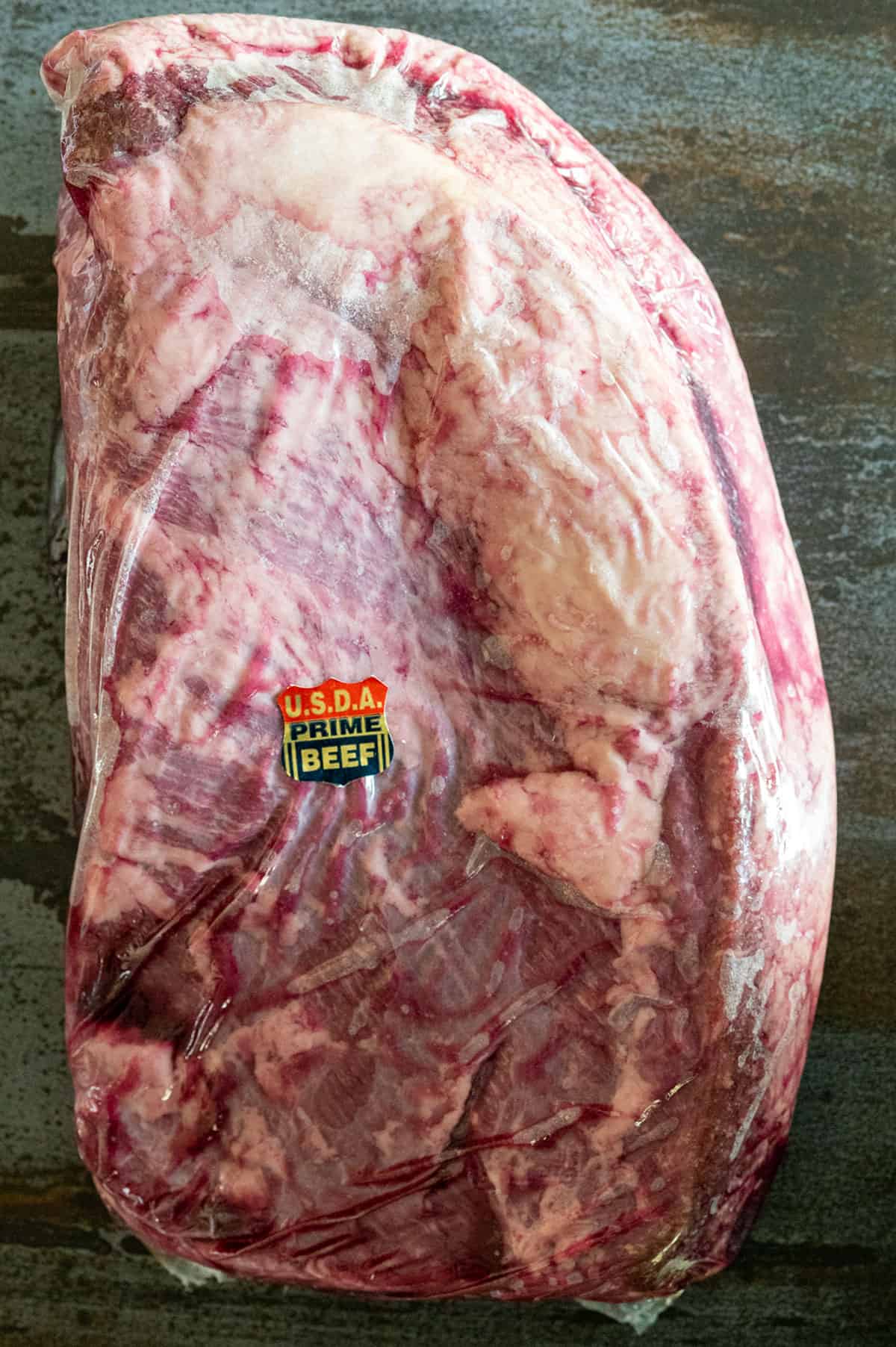
If you find a prime grade beef brisket and it’s within your budget, grab it. This will have moderately abundant marbling. When you start the smoking process with a more marbled brisket, you’re already starting out on top.
Not to add to the confusion, but sometimes you can find a choice-grade brisket that has really nice marbling. So don’t just focus on how it’s graded. Take the time to look at the meat and look for one with nice striations of fat.
Canadian Beef Grading System
In Canada, The Canadian Beef Grading Agency (CGBA) assesses each carcass for maturity, meat color, fat color, carcass muscling, fat coverage and texture, meat texture and marbling level.
Its grade levels include A, AA, AAA and prime.
Canadian Grade A beef has only a trace of marbling. Grade AA has slight marbling and is similar to USDA select. Grade AAA is similar to USDA choice and has small marbling. Like U.S. prime beef, Canadian prime beef must have a slightly abundant amount of marbling.
Australian Beef Grading System
In Australia, the AUS-MEAT is responsible for establishing and maintaining meat specifications.
Like the U.S. and Canada, inspectors assess carcass quality for rib fat, meat color, fat color, ribeye muscle and marbling.
The meat is assigned quality grades from 0 to 9. A grade 0 means there is an absence of marbling; whereas a grade of 9 indicates there is an abundance of marbling.
Many competitive pitmasters will cook A9 briskets, because they are heavily marbled.
Different Breeds of Beef
In addition to USDA grades, there are different breeds of cattle, and these breeds, because of their genetics and how they’re raised, can surpass standard USDA standards.
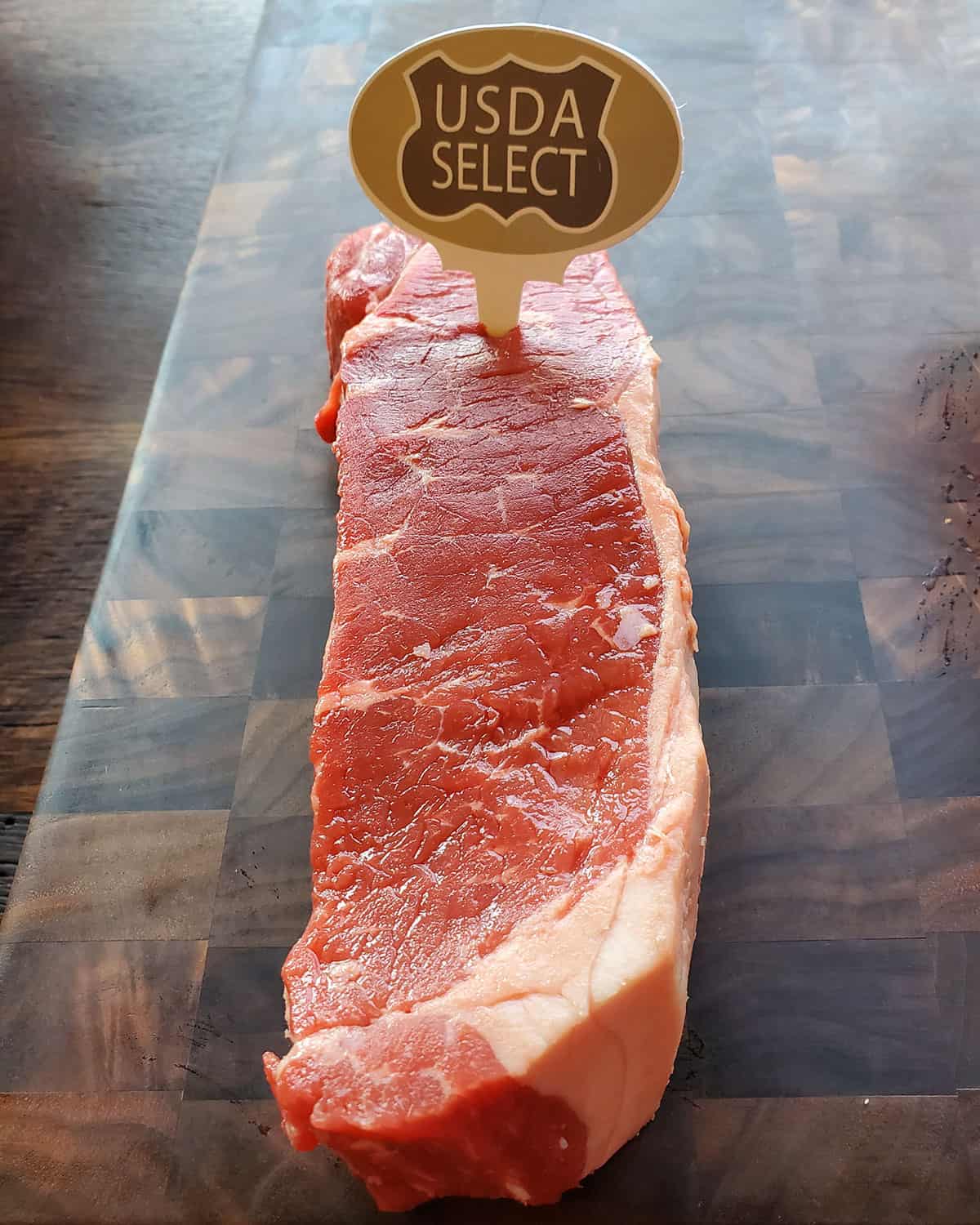
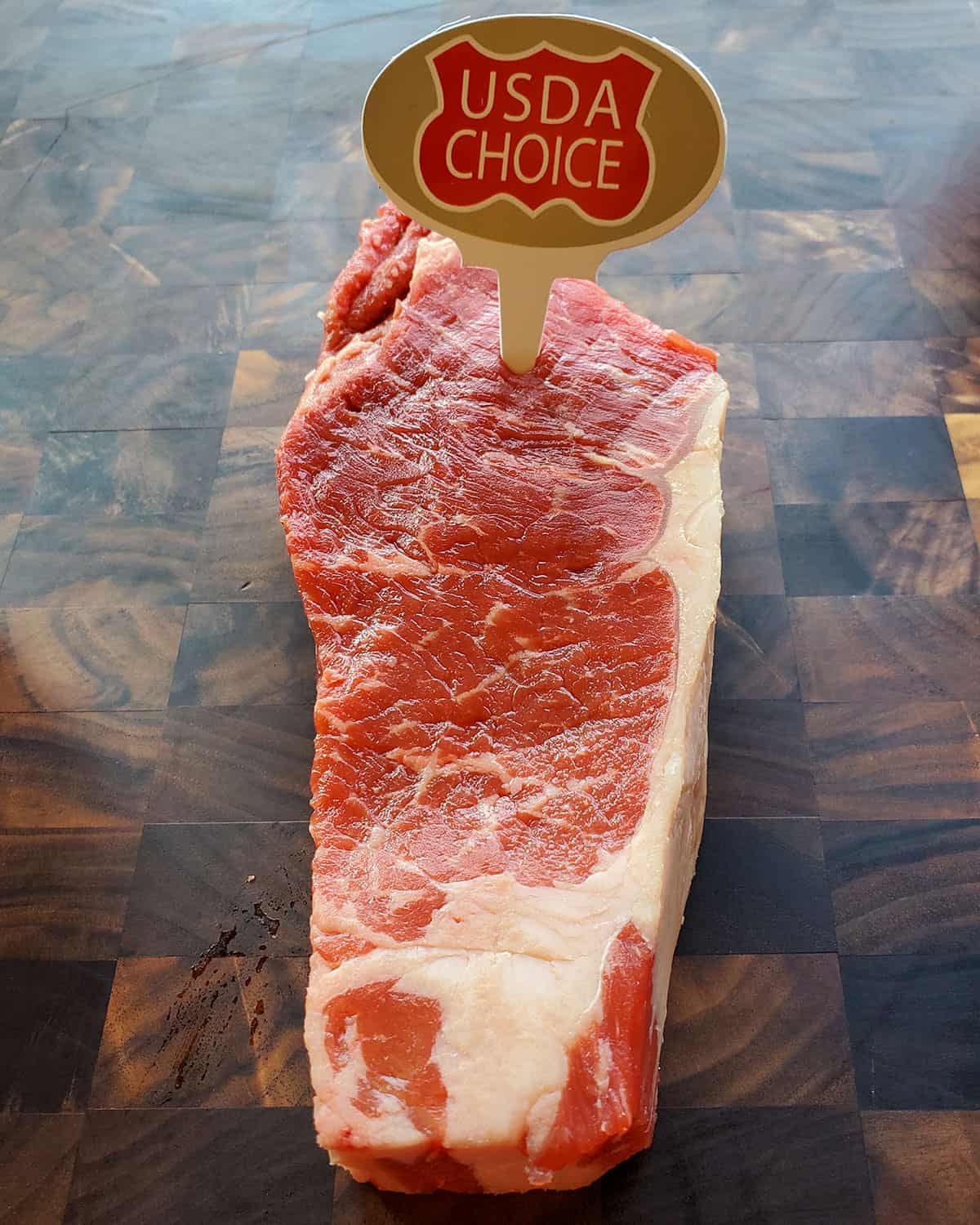
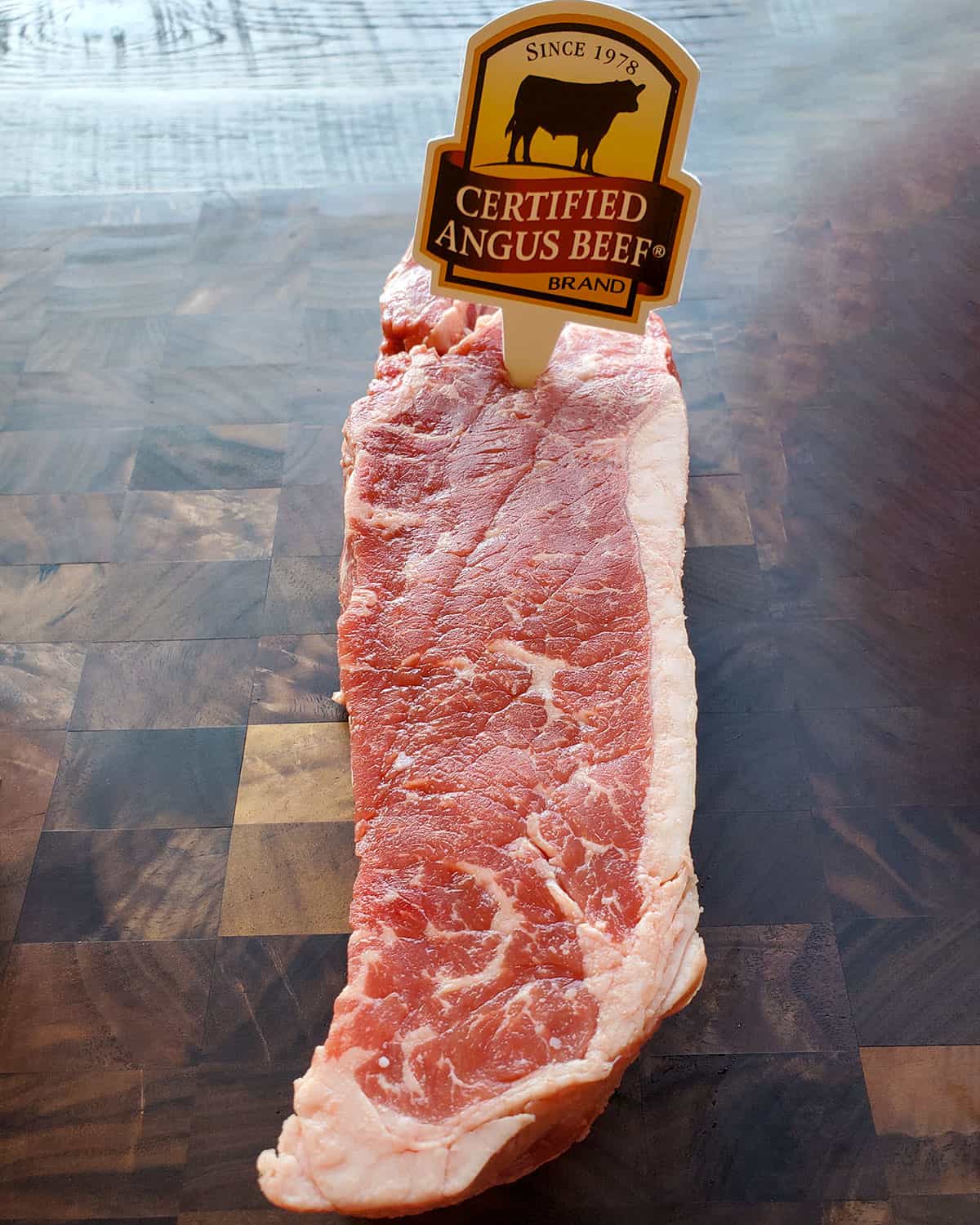
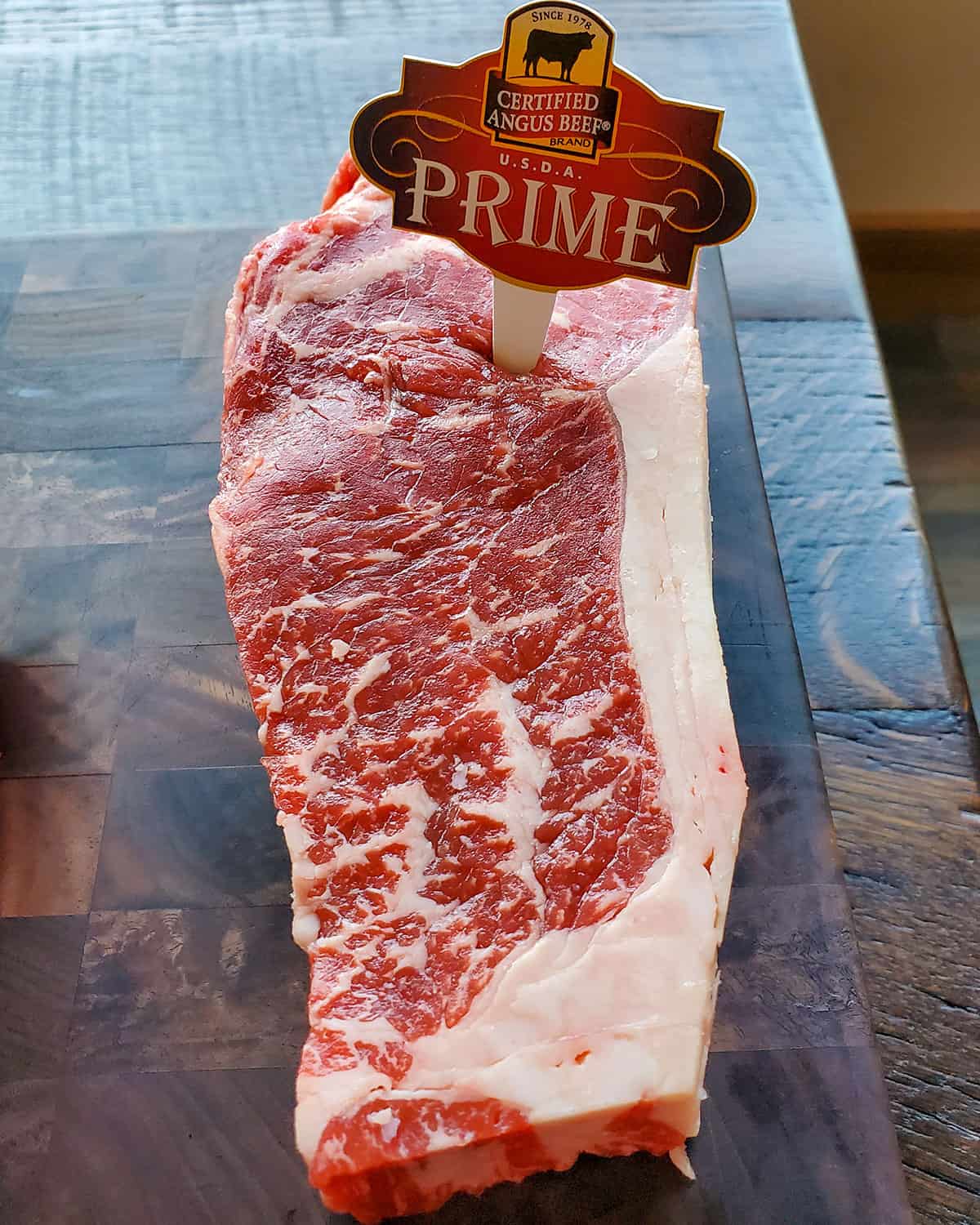
Certified Angus Beef Brand
Angus cattle are black-hided cows that are known for their quality taste. All Angus cattle aren’t created equal, so when I’m buying Angus, I always look for Certified Angus Beef brand.
Certified Angus Beef brand beef is graded by the USDA and does come in choice and prime. But to be branded as Certified Angus Beef, the cattle have to meet 10 specific standards. This ensures you’re guaranteed the same quality every time.
A lot of my friends who own barbecue restaurants across the U.S. cook Certified Angus Beef brand prime briskets in their BBQ joints.
The challenge with Certified Angus Beef, is that it’s only sold in retail markets in select regions, mostly in the south and midwest. They are working to expand.
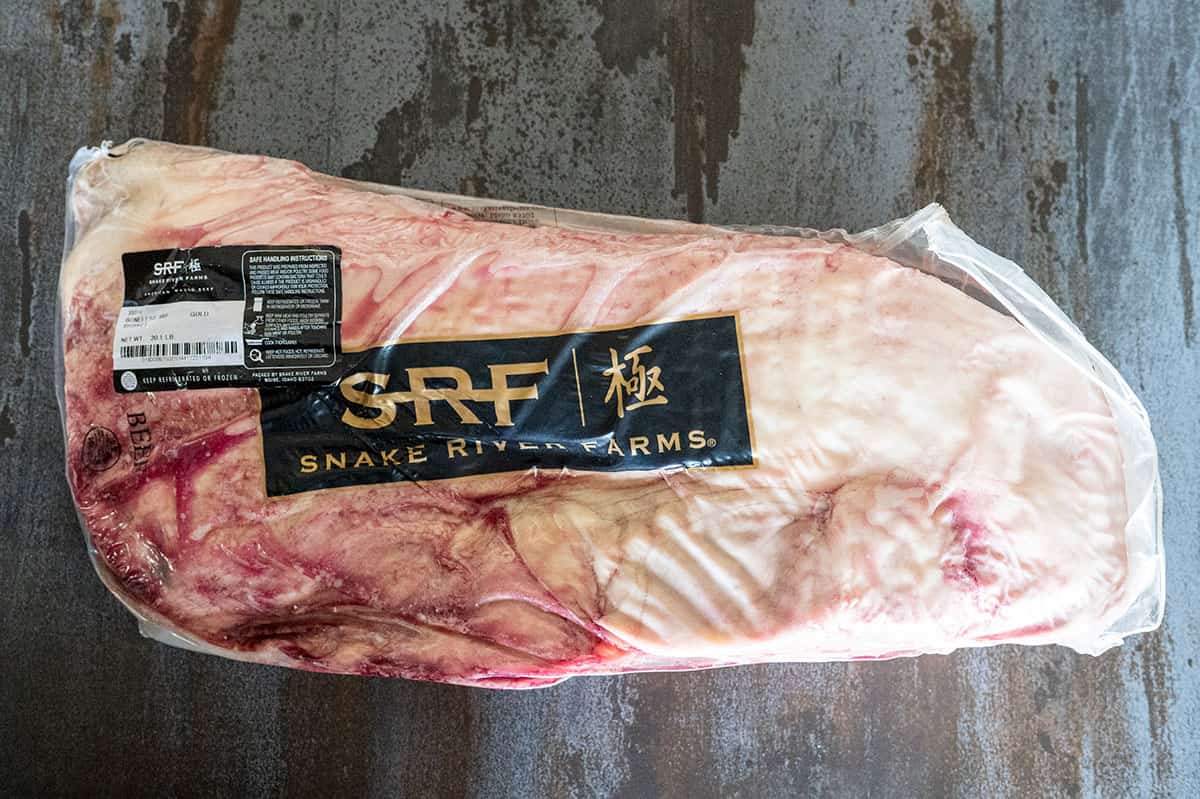
Snake River Farms
When it comes to wagyu beef, I’m a fan of American Wagyu from Snake River Farms. Wagyu is a breed that originated in Japan. It is known for its intense marbling. It’s so marbled that it surpasses the USDA grading scales.
Instead, their beef is graded as “black” and “gold.”
An SRF black grade brisket will cost you substantially more than a USDA prime brisket, but the results will be out of this world.
If you want to cook top-of-the-line high-quality brisket, try SRF gold grade briskets. The marbling is phenomenal, which ensures it will be moist and flavorful. SRF gold is all I use in BBQ competitions when I cook hot and fast brisket.
Mind you, these briskets will run you around $200, but Snake River Farms does have occasional 20% off sales, so that’s when I stock up. And if you use code GIRLSCANGRILL at checkout, you can save 10% any time.
What about Grass-Fed Beef?
First, let me clear something up. All cows are grass-fed. They start their lives in a pasture and graze on the grass and natural vegetation.
It’s how a cow is finished that impacts the flavor of the meat. A grass-finished cow is a cow that lives her whole life in the pasture and feeds on natural vegetation. According to the National Cattleman’s Beef Association, she may also eat forage, hay or silage.
A grain-finished cow transitions from a grass and forage diet to a balanced diet that includes grains, potato hulls, sugar beets and hay at a feedyard. Grain-finished cows result in meat with more marbling and a slightly sweeter flavor.
Where to Buy Brisket
In the U.S., brisket can usually be found year-round at your local grocery store, Sam’s Club or Costco in the meat section. I have found that most of the time the brisket at the grocery stores is graded as USDA choice; whereas the big box stores occasionally carry USDA prime.
Check the prices before you buy. Sometimes the prime is actually priced lower than the choice.
You can also order briskets online from different farms and butchers. When ordering online, they usually arrive frozen, so be sure to work in a couple of days of thaw time when you plan your cook timeline.
Next, follow my tutorial on How to Trim a Brisket or How to Separate Brisket Point and Flat for Backyard or Competition.
Which Grade of Brisket Should I Buy?
The brisket is a very tough piece of meat because it contains a lot of connective tissue. The tissue needs a lot of time exposed to heat for it to break down and become tender.
When you choose a higher grade of beef, it will have more intramuscular fat, which results in a more tender and flavorful beef brisket.
I recommend buying the highest grade of brisket you can based on your budget.
A wagyu brisket or Australian A9 will result in one of the best briskets you’ll ever eat, but they are very pricy. Buying a prime-grade brisket is a good option as an alternative because it’s much more affordable.
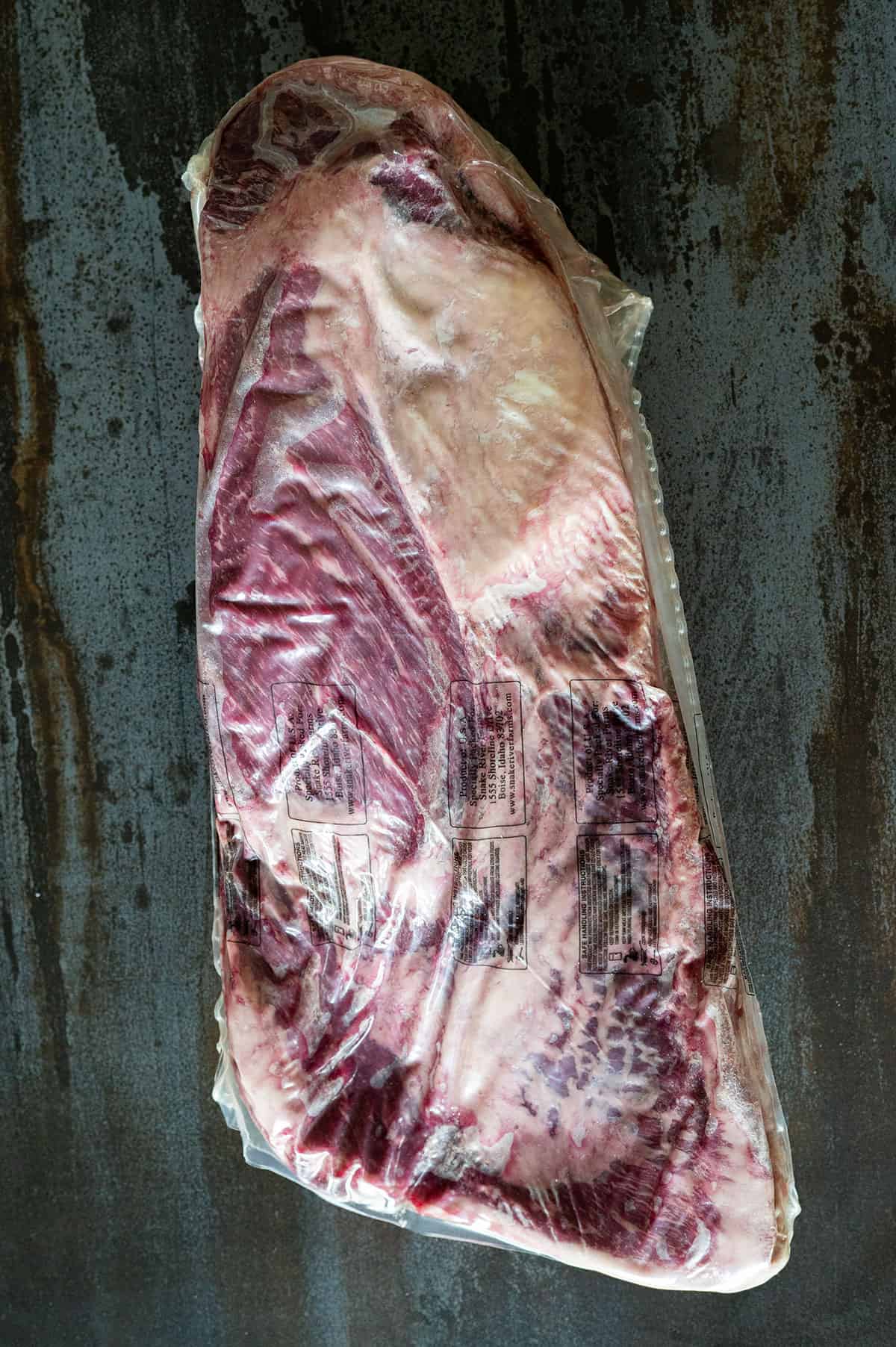
Frequently Asked Questions
If you are cooking a lower-graded choice brisket, you need to treat it differently than a higher-graded brisket, because it has less fat content. Choice-grade briskets are best cooked slow and low; whereas highly marbled briskets do well when cooked at hot and fast temperatures.
If your brisket is dry, it’s likely because you chose a low grade or cooked it too fast. Consider using the Texas Crutch. This method helps lock moisture in during the cooking process.
When brisket is sold whole, it’s called a whole packer brisket. Usually, the deckle is already removed. Butchers can also separate the two muscles and sell the brisket flat or the brisket point.
The point has much more marbling, but it’s rare to find these on their own.
This really depends on your budget. Personally, I recommend spending a little more on a prime-grade brisket, because it should have more marbling. This will result in a more tender, flavorful brisket.
However, sometimes you can find choice briskets that also have a good amount of marbling.
Be sure to look at the flat end of the brisket, not the point end. This is the leanest muscle. If it’s solid red, return it to the case. If it has some nice white flecks of fat, it should turn out great.
